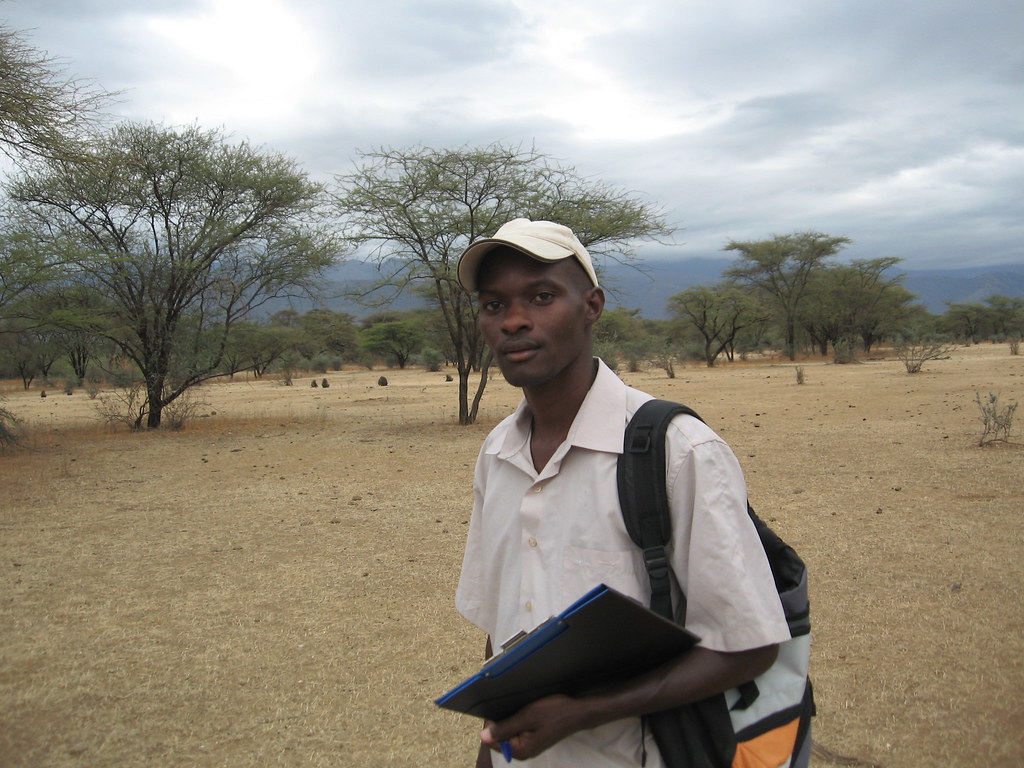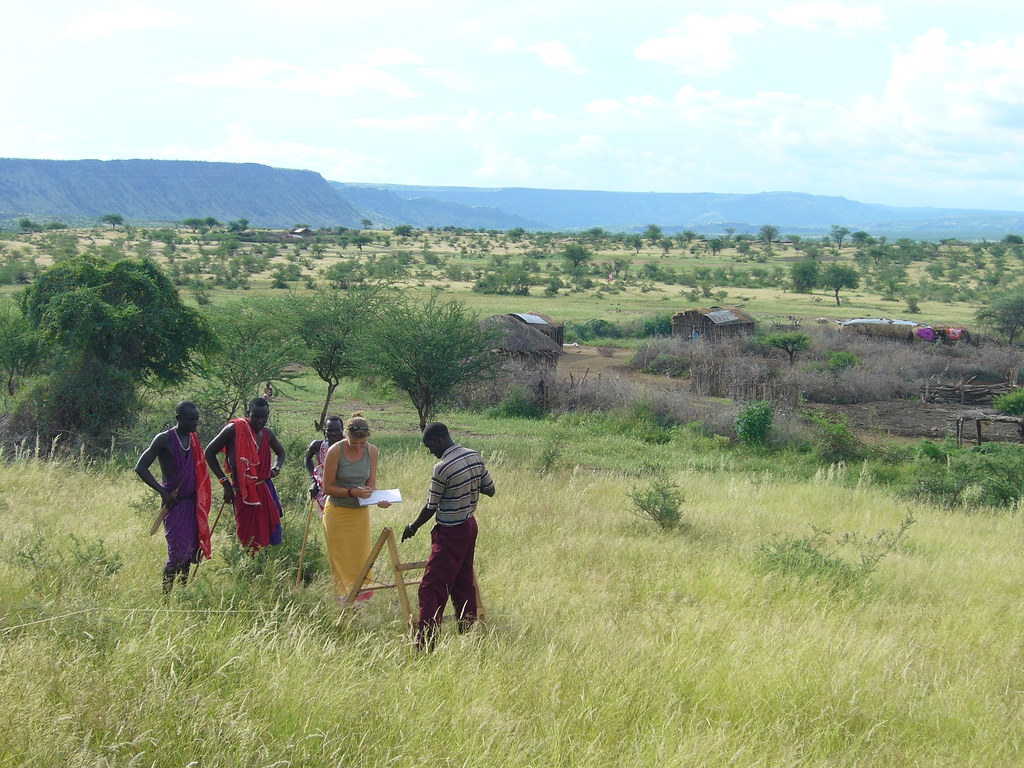 Earth Expeditions came to stay at the resource centre for about a week. Part of their program included a community day where Olkiramatian and Shompole leaders came and talked about Maasai culture and tradition and then everyone spilt up into small groups and discussed various political, personal, and economic issues differing in the two countries. A hot topic was how people here were coping with the current drought. The women’s group formed one small group and discussed cultural differences with the women from the United States. Everything from husbands to education was discussed. Two days later the women came back to showcase their traditional Maasai beadwork and generate supplemental income for their families. About 50 women showed up producing quite a selection of goods. When the resource center is completely built, one proposed building is a welcoming hut where the women can permanently display their beadwork and sell it all of the guests that come through the centre.
Earth Expeditions came to stay at the resource centre for about a week. Part of their program included a community day where Olkiramatian and Shompole leaders came and talked about Maasai culture and tradition and then everyone spilt up into small groups and discussed various political, personal, and economic issues differing in the two countries. A hot topic was how people here were coping with the current drought. The women’s group formed one small group and discussed cultural differences with the women from the United States. Everything from husbands to education was discussed. Two days later the women came back to showcase their traditional Maasai beadwork and generate supplemental income for their families. About 50 women showed up producing quite a selection of goods. When the resource center is completely built, one proposed building is a welcoming hut where the women can permanently display their beadwork and sell it all of the guests that come through the centre. In the last week, the women have also attended a workshop where, along with eight other women’s groups in Kenya, they met to share ideas and projects that they have started.
In the last week, the women have also attended a workshop where, along with eight other women’s groups in Kenya, they met to share ideas and projects that they have started.ACC facilitated the meeting and four representatives from each group attended the workshop. The Olkiramatian Women’s group was especially interested in something that the Amboseli group was already doing, bee keeping. It is something that each sub-location can independently do and then they can use the resource centre as a refining centre for the honey.














